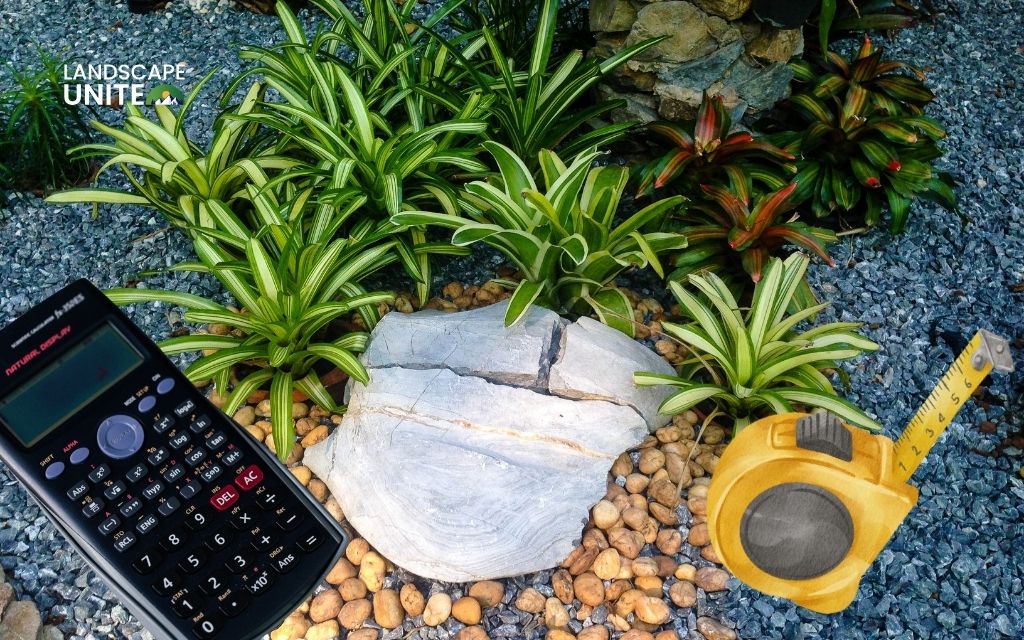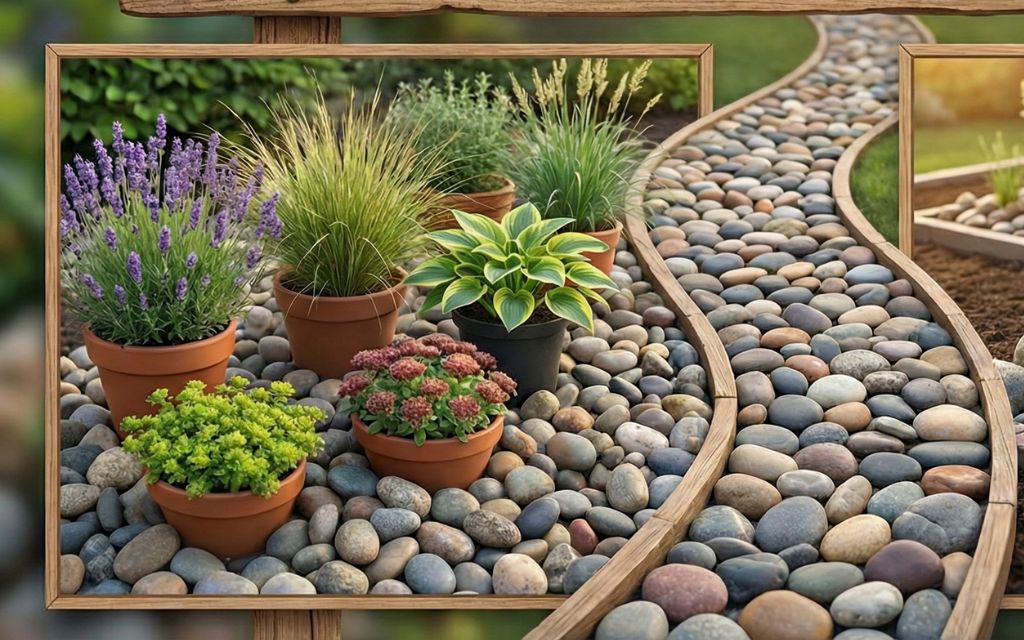Creating a pollinator-friendly xeriscape garden combines water conservation with wildlife support, using 50-75% less water than traditional landscapes while providing essential habitat for bees, butterflies, and other beneficial insects.
This sustainable approach transforms your outdoor space into an eco-friendly sanctuary that thrives with minimal maintenance while supporting local ecosystems.
Explore our comprehensive blog below for more expert insights on how to create a pollinator-friendly xeriscape garden, native plant selection, and creating wildlife-friendly landscapes that conserve precious water resources.
Why should you make it pollinator-friendly?
Xeriscaping is water-efficient landscaping that uses drought-tolerant plants and smart design to create sustainable gardens. Making it pollinator-friendly addresses habitat loss while maintaining water conservation goals.
Pollinators are essential for ecosystem health and food production. They facilitate plant reproduction, with one-third of our food depending on their services. Native pollinators have co-evolved with local plants, creating specialized relationships that support biodiversity.
Native plants require minimal water once established and provide superior nutrition for local pollinators. They’re naturally adapted to regional climate conditions and support complete pollinator life cycles, unlike non-native species.
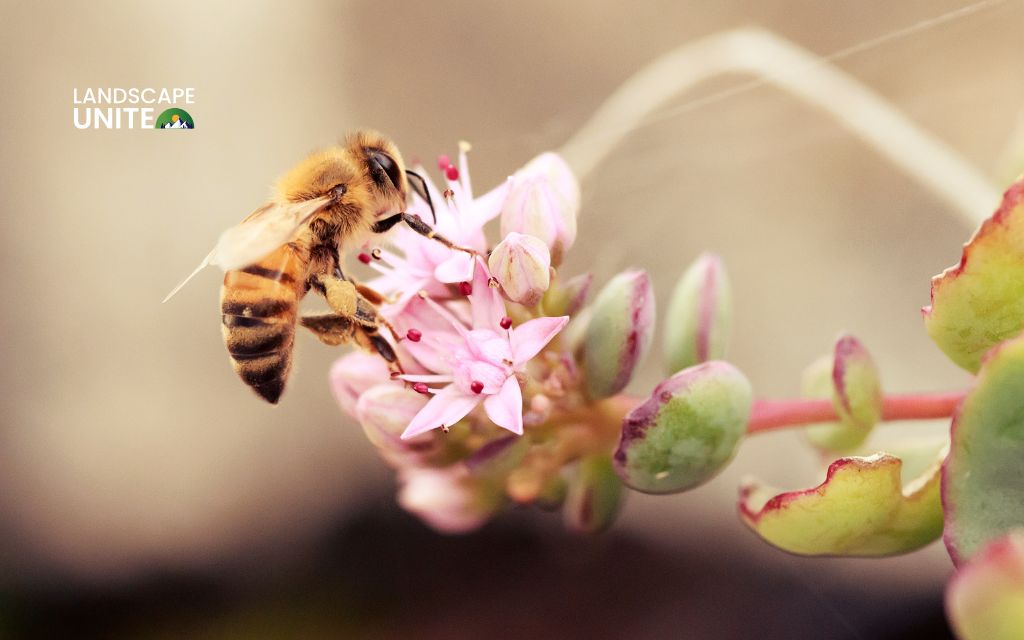
How to create a pollinator-friendly xeriscape garden
Creating a successful pollinator-friendly xeriscape requires careful planning and systematic implementation. Follow these detailed steps to design a garden that conserves water while supporting local wildlife.
Step 1: Choose the right location
The foundation of any successful xeriscape begins with understanding your site conditions. Proper location assessment ensures your pollinator plants will thrive while minimizing water requirements.
Evaluate your garden’s sunlight
Most pollinator-friendly plants require 6-8 hours of direct sunlight daily. Bees, in particular, are most active in sunny areas where flowers produce the most nectar. Walk your property at different times of day, noting which areas receive full sun, partial shade, or full shade.
Consider protection from wind
Strong winds can stress both plants and pollinators, making foraging difficult and increasing water evaporation. Identify natural windbreaks like existing trees or structures, or plan to install protective elements.
Strategic placement of taller shrubs or ornamental grasses can create microclimates that shelter smaller flowering plants and provide resting spots for butterflies and bees. These wind barriers also reduce soil moisture loss, supporting your water conservation goals.
Create water sources
Even drought-tolerant pollinators need access to clean water for drinking and nest-building. Small water features become magnets for beneficial insects while adding visual interest to your xeriscape design.
Step 2: Select pollinator-friendly, drought-tolerant plants
Plant selection forms the heart of your pollinator-friendly xeriscape. Focus on native species that provide abundant nectar and pollen while tolerating dry conditions once established.
Native plants for pollinators
Choose plants based on your specific ecoregion for best results. Here are some native xeriscape plants found across various climate zones:
- Echinacea (Purple Coneflower) serves as a pollinator powerhouse, attracting over 40 species of native bees along with butterflies and beneficial wasps. These hardy perennials bloom from summer through fall, providing consistent nectar when many other flowers fade. The seed heads also feed birds through winter.
- Asclepias tuberosa (Butterfly Weed) represents the gold standard for monarch butterfly habitat. This native milkweed produces brilliant orange flower clusters that serve as both nectar sources and monarch nurseries.
- Penstemon species offer trumpet-shaped flowers perfectly sized for native bee tongues. These western natives come in purple, pink, red, and white varieties, blooming from late spring through summer.
- Salvia varieties provide some of the richest nectar sources available to pollinators. Native salvias like autumn sage and gregg sage attract bees, butterflies, and hummingbirds while requiring virtually no supplemental water after establishment.
- Lavender creates a fragrant addition that honey bees absolutely adore. While not native to North America, Mediterranean lavenders are drought-tolerant and bloom repeatedly with minimal care. Choose varieties like Spanish lavender for the hottest, driest climates.
Drought-tolerant plants for xeriscaping
Complement your flowering plants with structural elements that add year-round interest while conserving water:
- Succulents like sedum varieties produce late-season flowers that attract native bees and beneficial wasps. Agave plants bloom spectacularly every 10-25 years, drawing hummingbirds and long-tongued bats. Aloe vera flowers provide winter nectar when few other sources exist.
- Native grasses such as blue grama, buffalo grass, and bunch grasses provide nesting sites for ground-dwelling bees while requiring no irrigation after establishment. Their seeds feed birds, and their roots prevent soil erosion.
- Native shrubs form the backbone of pollinator habitat, offering nesting sites, wind protection, and often abundant flowers. Manzanita produces urn-shaped flowers beloved by native bees, while sagebrush supports specialist bee species found nowhere else.
- Native wildflowers like California poppies and blanket flowers provide masses of color while supporting diverse pollinator communities. These annuals often self-seed, creating naturalistic drifts that change slightly each year.
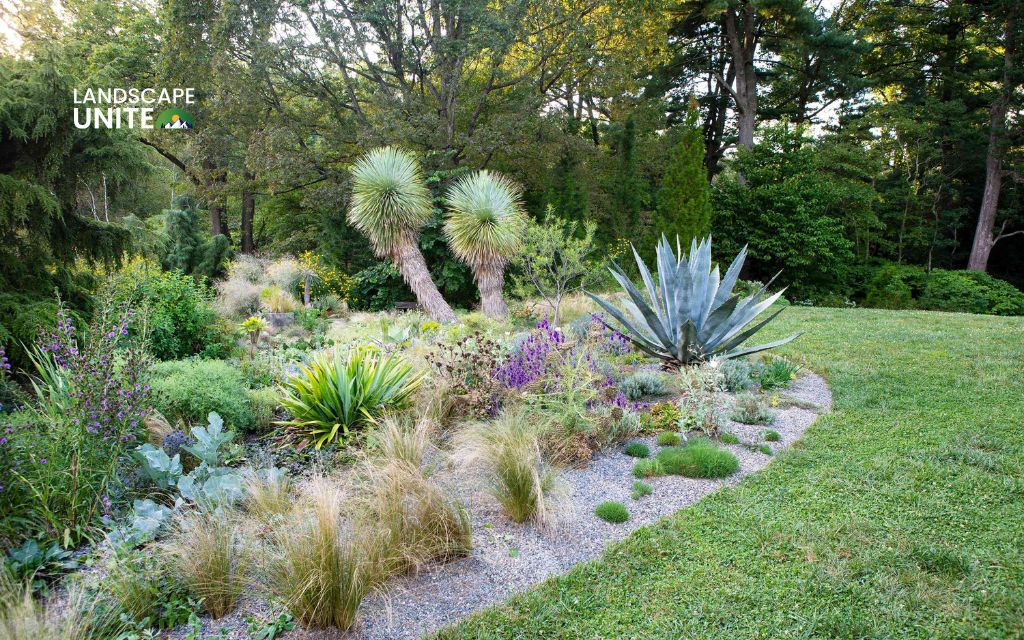
Step 3: Create pollinator-friendly hydrozones
Efficient water management allows you to support both drought-tolerant and thirsty plants within the same xeriscape design. Hydrozoning groups plants with similar water needs, maximizing efficiency while minimizing waste.
Group plants based on water needs
Organize your garden into distinct zones based on irrigation requirements.
Place high-water plants like native wildflower meadows and herb gardens closer to your home where they’re easy to maintain. Position drought-tolerant succulents and native shrubs in areas that rely primarily on natural rainfall.
Create transition zones between high and low-water areas using plants with moderate water needs. This graduated approach looks natural while ensuring each plant receives appropriate moisture levels.
Use efficient irrigation systems
Install separate irrigation zones for each hydrozone, allowing you to customize watering schedules based on plant needs and seasonal conditions. Smart controllers can automatically adjust watering based on weather conditions, soil moisture, and plant requirements.
Rain barrels and cisterns capture natural precipitation for use during dry periods. Position these systems to irrigate your highest-maintenance plantings, reducing dependence on municipal water supplies.
Master the steps to creating an efficient irrigation system for your xeriscape garden in this guide.
How to enhance your xeriscape garden for pollinators
Beyond plant selection, thoughtful design elements can dramatically increase your garden’s value to pollinators while maintaining water-efficient principles.
Provide shelter and nesting areas
Creating diverse habitat structures supports the complete lifecycle of beneficial insects. Different pollinator species have varying shelter and nesting requirements that your garden design can accommodate.
Plant pollinator habitat plants
Incorporate plants that serve multiple functions throughout the growing season. Sunflowers provide summer nectar, autumn seeds for birds, and hollow stems for overwintering beneficial insects. Native asters bloom late in the season when few other nectar sources remain available.
Maintain some “messy” areas where beneficial insects can complete their life cycles. Leave plant stems standing through winter, as many native bees nest in hollow stems or overwinter as pupae attached to plant material.
Bare soil patches provide nesting sites for ground-dwelling bees that make up 70% of native bee species.
Incorporate bee hotels
Artificial nesting structures can supplement natural habitat, especially in urban areas where natural nesting sites are scarce. Commercial bee hotels work well, or you can construct your own using bamboo tubes, drilled wood blocks, or bundles of hollow stems.
Position bee hotels 3-6 feet off the ground in locations that receive morning sun but afternoon shade. Face openings southeast to catch warming morning rays while avoiding intense afternoon heat. Place them within 300 feet of abundant flowering plants for maximum occupancy.
Add water features
Water elements serve multiple functions in xeriscape design, supporting pollinators while adding visual and auditory interest to your garden.
Birdbaths and shallow dishes
Traditional birdbaths often prove too deep for small pollinators, but simple modifications make them bee and butterfly-friendly. Add stones, marbles, or cork pieces to create landing platforms and shallow drinking areas.
Position water features in partially shaded locations to slow evaporation and keep water cooler. Refresh water every few days to prevent mosquito breeding while maintaining clean drinking water for beneficial insects.
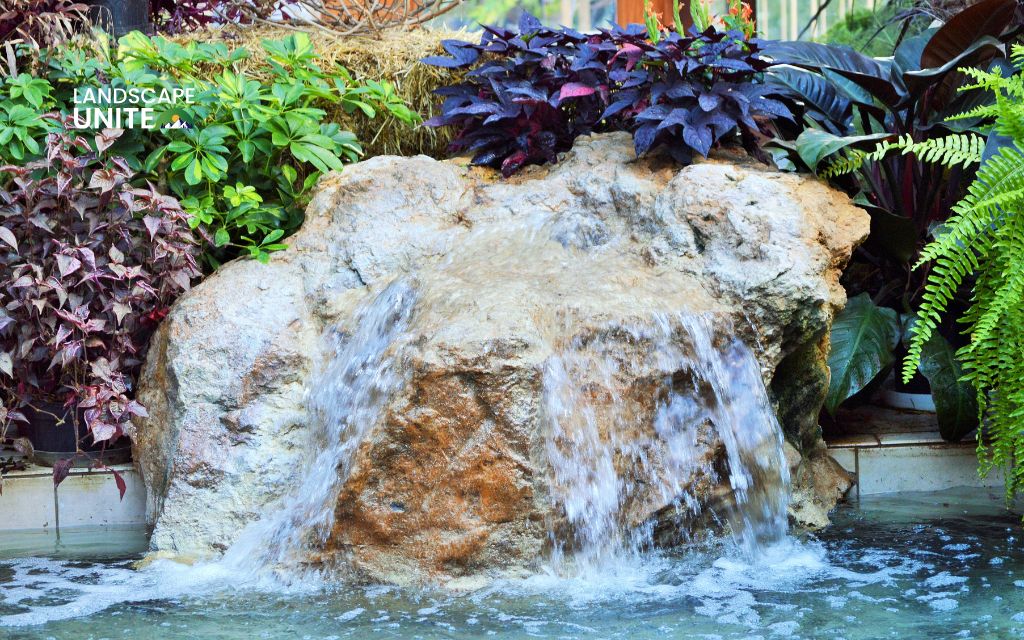
Rain gardens and wet areas
Seasonal wet areas created by directing roof runoff can support both water conservation and pollinator habitat goals. Plant these areas with native plants that tolerate both wet and dry conditions, creating dynamic habitat that changes with the seasons.
Rain gardens planted with native rushes, sedges, and wildflowers provide early-season nectar while managing stormwater runoff.
As these areas dry out through the season, they continue supporting pollinators while demonstrating natural water cycles.
Common mistakes to avoid
When creating your pollinator-friendly xeriscape, avoid these critical errors that can undermine your garden’s success:
- Using non-native plants or invasive species: Non-native plants lack proper nutrition for native pollinators and may become invasive. Always research and choose plants native to your specific ecoregion for best results.
- Overwatering or using inefficient irrigation systems: Excessive watering defeats xeriscaping goals and can kill drought-adapted plants. Use drip irrigation, soil moisture sensors, and deep, infrequent watering instead.
- Failing to provide year-round resources for pollinators: Pollinators need continuous food sources from spring through fall. Select plants with staggered bloom times including early bloomers (fruit trees), mid-season perennials, and late bloomers (asters).
- Planting without considering mature plant size: Overcrowding leads to poor air circulation and increased water competition. Research mature plant dimensions and space accordingly to prevent future problems.
- Ignoring soil preparation and drainage: Poor drainage kills drought-tolerant plants that require well-draining soil. Amend heavy clay soils with compost and sand, or create raised beds for better drainage.
Conclusion
A pollinator-friendly xeriscape garden successfully combines water conservation with wildlife habitat. Key steps include selecting sunny, protected locations, choosing native drought-tolerant plants, implementing efficient irrigation through hydrozoning, and providing diverse habitat elements.
Start small with proven native plants for your region, then expand gradually. Even modest efforts significantly impact local pollinator populations while demonstrating sustainable landscaping practices.
Remember that creating a thriving xeriscape is a journey that requires patience and observation as your garden evolves with the seasons.
Continue exploring our yard care resources for more expert gardening tips, plant selection guides, and sustainable landscaping techniques to master the art of water-wise gardening and create outdoor spaces that benefit both you and the environment.
Discover more about xeriscaping:
- 3 proven ways to replace your lawn with a xeriscape garden
- 8 steps to xeriscaping your yard and saving water
- 10 best dog-friendly xeriscape backyard ideas to transform your home
Frequently asked questions (FAQs)
What is the best time of year to plant pollinator-friendly xeriscaping plants?
Fall is optimal in most regions, allowing root establishment before summer heat. Spring works for harsh winter areas. Always water new plantings regularly in their first year.
Can I create a pollinator-friendly xeriscape garden in a small space?
Yes! Focus on high-impact native plants in containers or small beds. Even a single large planter with native wildflowers supports numerous pollinator species.
How do I choose the right plants for xeriscaping in my region?
Contact your local cooperative extension office or native plant society for region-specific recommendations. Consider soil type, rainfall, and elevation when selecting plants.
What are the best water-saving techniques for pollinator-friendly gardens?
Use drip irrigation, group plants by water needs, apply organic mulch, collect rainwater, and primarily choose native plants adapted to local rainfall patterns.
Can I integrate a vegetable garden with a pollinator-friendly xeriscape design?
Yes! Include drought-tolerant herbs like oregano and sage, allow some vegetables to flower, and group edible plants in higher-irrigation zones with similar water requirements.
